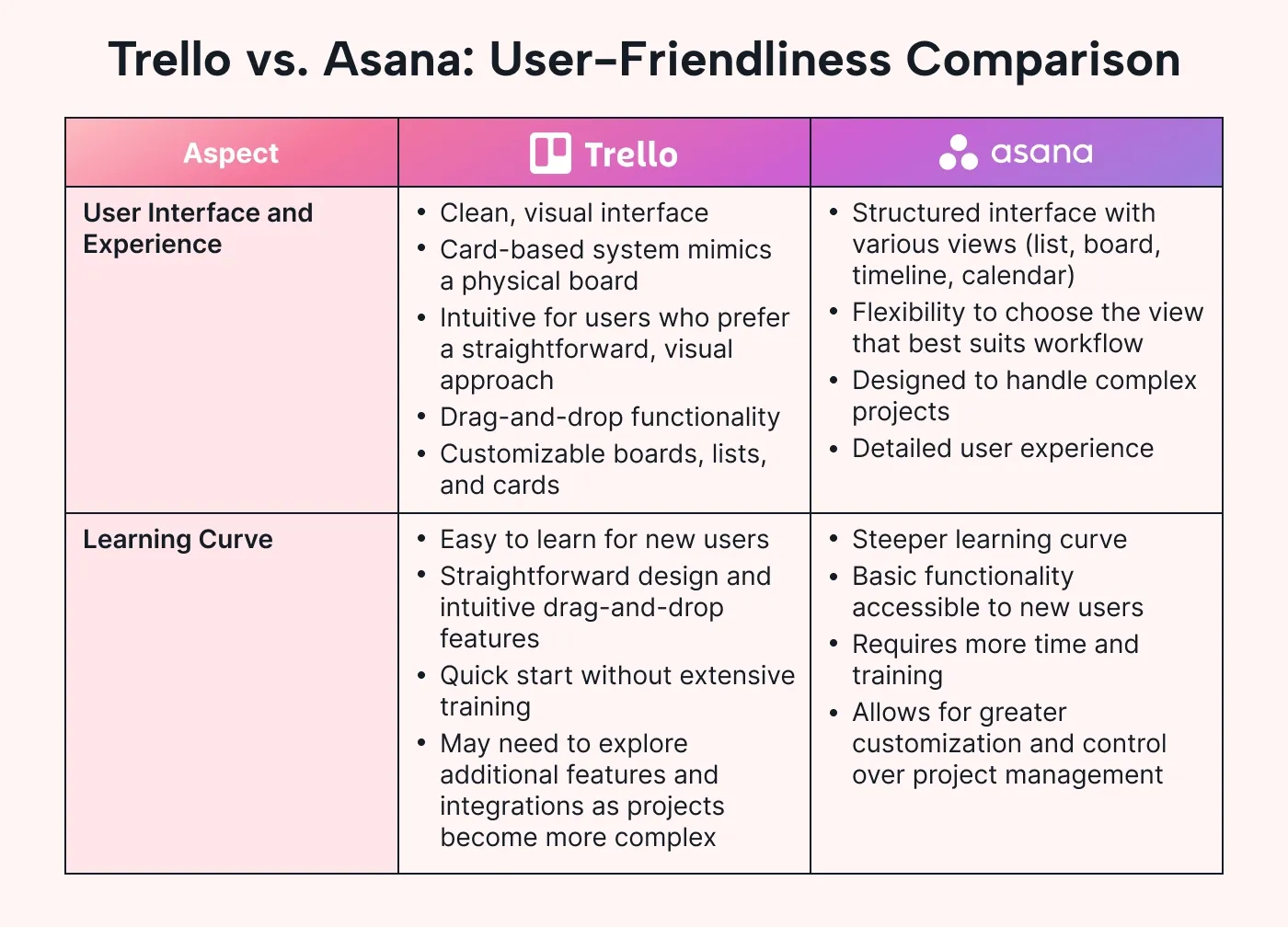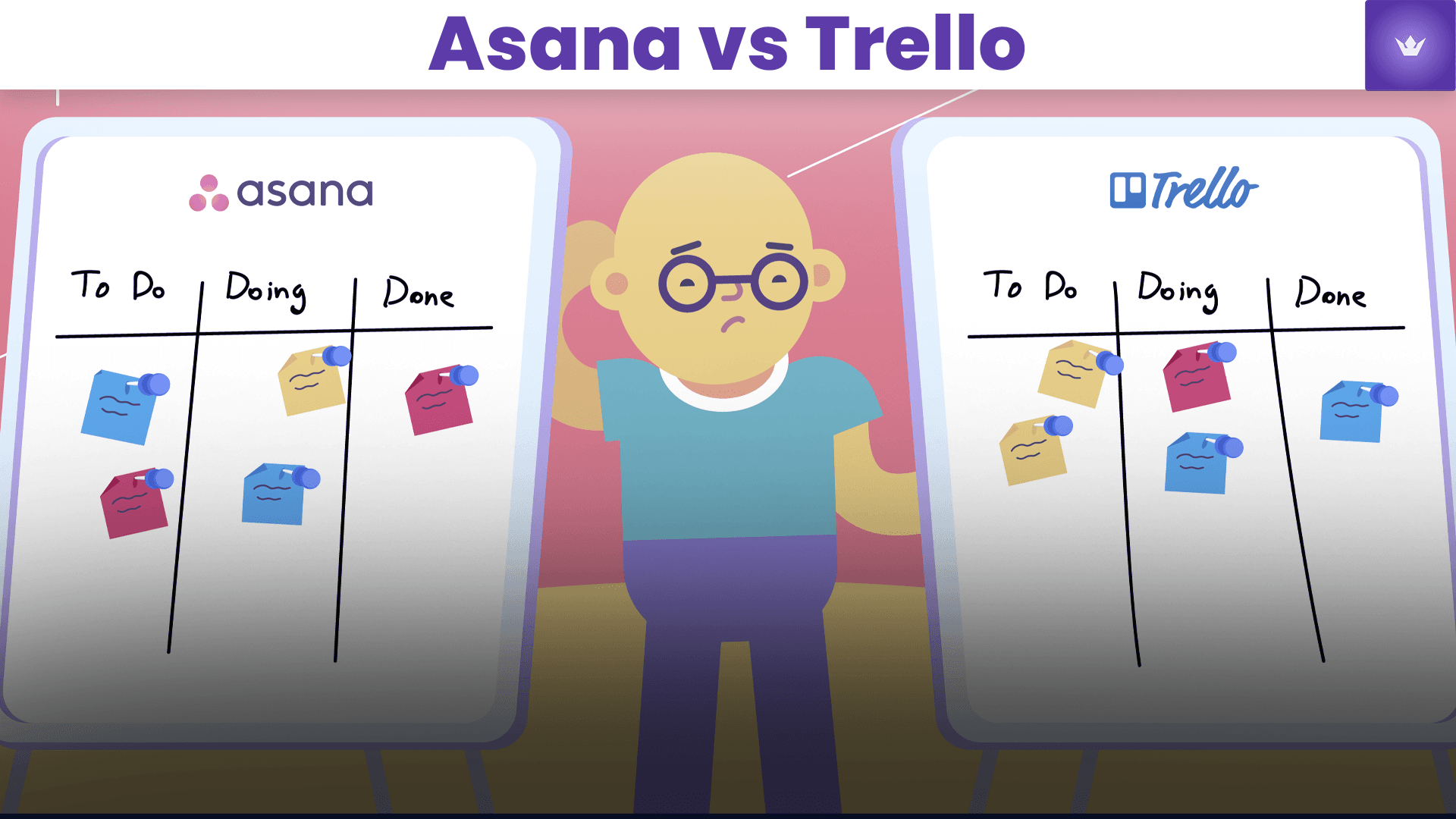Choosing the best project management software isn't always easy. In 2025, productivity tools have transformed drastically, and two leading platforms, Asana and Trello, continuously attract attention. You're likely here because you're deciding between the two—well, you're in the right place!
In this comprehensive comparison, we'll deeply explore Asana vs Trello, highlighting strengths, drawbacks, key features, pricing, ease of use, integrations, and much more. All to help you make the best-informed decision.
Here's exactly what we'll cover in our showdown:
- Asana vs Trello: Overview and Introduction
- Asana vs Trello: Key Features Comparison
- Pricing and Plans: Asana vs Trello
- Ease of Use and User Interface in Asana vs Trello
- Integrations and Compatibility: Asana vs Trello
- Customer Support Comparison: Asana vs Trello
- Pros and Cons of Asana vs Trello
- Asana vs Trello: Which One Should You Choose in 2025?
So, grab yourself a cup of coffee (or tea!) and let's dive in.
Asana vs Trello: Overview and Introduction
Understanding Asana (Brief Background)
Founded in 2008, Asana is a robust tool aimed at helping teams manage complex projects and workflows. Famously co-founded by Facebook alumni Dustin Moskovitz, today Asana serves thousands of companies including Airbnb, Spotify, and Google.
At its core, Asana simplifies tasks, projects, and team collaboration with lists, calendars, boards, and timeline views. Designed to boost productivity and clarity, its goal is clear: ensure nothing falls through the cracks.
Understanding Trello (Brief Background)
On the other hand, Trello entered the productivity scene in 2011, quickly rising to fame with its intuitive Kanban-style interface. Acquired by Atlassian in 2017, Trello supports users from individual freelancers to huge corporations like Adobe, Kickstarter, and National Geographic.
Trello’s appealing visual approach allows teams to instantly track the progress of tasks using boards, lists, and color-coded cards, giving users a simpler and highly engaging method to visualize workflow.

Asana vs Trello: Key Features Comparison
Task Management Capabilities
When we talk task management, both Asana and Trello shine.
-
Asana: Allows creating detailed task descriptions, attachments, sub-tasks, dependencies, and provides multiple views such as Calendar, List, Timeline, Kanban Board, and even workload management—a huge bonus for teams dealing with large-scale projects.
-
Trello: Provides an intuitive Drag-and-Drop Kanban board. It's visually appealing, effortless to learn, and ideal for agile teams. You can easily add task details, attachments, due dates, and labels.
However, for more complex workflows and projects scaling in size or needing dependencies, Asana has a slight upper hand over Trello.
Automation and Customization (Asana vs Trello)
Automation is a blessing for modern teams in 2025, significantly increasing productivity:
-
Asana: Equipped traditionally with "Rules," allows powerful automation to move tasks automatically between sections, add automatic dependencies, custom workflows, and notifications based on action triggers.
-
Trello: Automation with "Butler" is straightforward, user-friendly, and allows teams to automate common actions like moving, archiving, and assigning cards. Here’s a helpful YouTube video explaining automation in Trello.
Pricing and Plans: Asana vs Trello
Pricing matters to all teams, big or small. Let's look at substance and affordability here:
Asana Pricing Overview
As of 2025, Asana offers four main pricing levels:
- Free: Up to 15 users, basic features.
- Premium ($13.49/month per user): Advanced search and reporting, timeline, task dependencies, milestones, unlimited users.
- Business ($30.49/month per user): Portfolios, workload management, advanced integrations, forms.
- Enterprise (custom pricing): Priority support, advanced security and compliance options.
Trello Pricing Overview
Trello provides a simpler pricing structure:
- Free: Basic unlimited cards, up to 10 boards per workspace.
- Standard ($6/month per user): Unlimited boards, advanced checklists, custom fields, automation (Butler).
- Premium ($12/month per user): Multiple views, dashboards, timeline view, unlimited automation.
- Enterprise ($17.50/month): Advanced user management, security options, dedicated support.
Both tools offer strong value. It really boils down to your team's size, needs, and budget flexibility.
Ease of Use and User Interface in Asana vs Trello
Asana User Interface
While slightly more powerful, Asana can present a minor learning curve due to numerous features. Nevertheless, a clear interface helps users adapt quickly. It's ideal for teams looking for flexibility, advanced features, and detailed project tracking.
Trello User Interface
Trello shines when it comes to simplicity and visual appeal. Using the Kanban approach, you've intuitively organized tasks. Most beginners learn Trello within minutes—no exaggeration. If your goal is immediate usability and visual clarity, Trello wins hands-down.

Integrations and Compatibility: Asana vs Trello
Both tools excel in integration capabilities, which are crucial in 2025 workflows.
Integrations in Asana
Asana integrates well with over 200 apps, including Gmail, Slack, Salesforce, Dropbox, Google Drive, and Outlook calendars. Communication and multitasking become effortless. Full integrations list available here.
Integrations in Trello
Similarly, Trello offers integration with major productivity tools and countless apps, including Slack, Microsoft Teams, Dropbox, Zapier, Jira, and more. Discover all Trello integrations on their integrations page.
Customer Support Comparison: Asana vs Trello
Asana Customer Support
Asana offers detailed documentation, support guides, free webinars, and email support. Premium and Business subscribers get priority assistance. Their YouTube channel further offers insights and tutorials.
Trello Customer Support
Trello provides helpful documentation, an active online community, and efficient email support. However, higher-tier subscribers gain access to priority assistance. Their engaging YouTube channel is also packed with useful videos.
Pros and Cons of Asana vs Trello
Asana Pros and Cons
Pros:
- Variety of views (list, board, calendar, timeline)
- Powerful automation and dependency tracking
- Suitable for large teams working on complex projects
Cons:
- Learning curve for newcomers
- Pricing slightly higher for smaller teams
Trello Pros and Cons
Pros:
- User-friendly interface and quick learning curve
- Visual and appealing for managing workflows
- Highly affordable for smaller teams
Cons:
- Limited features for complex project dependencies
- Less detailed analytics and reporting compared to Asana

Asana vs Trello: Which One Should You Choose in 2025?
This depends entirely on your organization type, scope, and complexity of the projects.
-
Choose Asana if: You need advanced project tracking, detailed sub-tasks, automation across complex large-scale projects, and multiple project views.
-
Choose Trello if: You prefer simplicity, quick onboarding, visual clarity, and affordability, with less complexity.
Our Recommendation (Personal Advice):
Having considered and tested both extensively, I recommend Trello for freelancers or small-to-medium teams craving simplicity, while suggesting Asana for larger-scale projects or teams needing advanced project tracking workflows. Feel free to check out this detailed comparison tutorial.
Have further questions about Asana vs Trello in 2025? Let us know in the comments which one you’ve tried—or plan to try!
Enjoy your project management journey!


